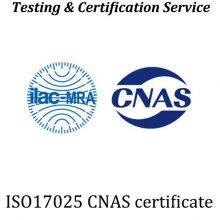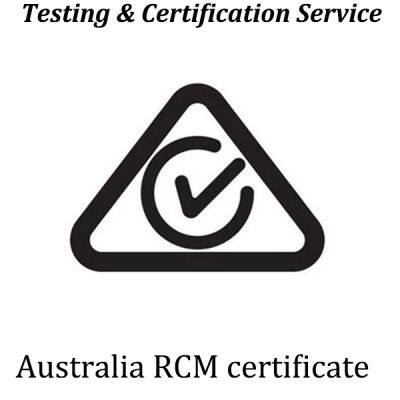Home > Products > Australia > The Australian government officially released the Cybersecurity (Smart Device Security Standards) Rules 2025
The Australian government officially released the Cybersecurity (Smart Device Security Standards) Rules 2025
- T/T L/C PayPal D/P Western Union Other
You May Like
-
The REACH Substances of Very High Concern (SVHC) List has grown to 250 items!
-
The IECEE officially released the safety testing standard for button-type lithium batteries, IEC 60086-4:2025.
-
On April 9, 2025, Canada's NRCan published new energy efficiency regulations for general service lamps (GSLs)
-
Bluetooth SIG Certification Fees
-
Inverter CE Certification Cost
-
Tablet PC IC Certification Application Process
Product Description
The Australian government officially released the Cybersecurity (Smart Device Security Standards) Rules 2025, which will come into effect on March 4, 2026.
On March 5, 2025, the Australian government officially released the Cybersecurity (Smart Device Security Standards) Rules 2025. As a core detail of the Cybersecurity Act 2024, the rules will come into effect on March 4, 2026, aiming to address the cybersecurity challenges of smart devices.
Manufacturers and distributors have one year to ensure compliance. They must adhere to strict security measures similar to EN 303 645, including:
? Prohibiting the use of common default passwords;
? Implementing a vulnerability reporting mechanism;
? Defining a support period for security updates.
To sell consumer IoT products in Australia, companies must provide a Declaration of Conformity confirming compliance with these security standards. This document must include:
? Product type and batch code;
? Manufacturer and representative details;
? Declaration of Conformity;
? Supporting short-term information;
? Location, date, and signature.
Official Link:
https://www.legislation.gov.au/F2025L00276/asmade/text
Background of the Regulation: Cyberattacks Surge, Vulnerabilities Emerge
In 2023, cyberattacks on smart home appliances in Australia increased by 170% year-on-year, with 78% of vulnerabilities stemming from factory default passwords and a lack of vulnerability response mechanisms. These regulations were developed to implement the obligations of the Cybersecurity Act 2024.
Scope of Application: Focuses on "Relevant Connectable Products"
The regulations apply to devices that directly or indirectly connect to the internet to send and receive data, such as smart TVs and smartwatches. They do not include desktop computers or smartphones.
Key Contents of the Regulation: Four Major Measures Strengthen Security
1. Prohibition of Universal Default Passwords: Requires the generation of a unique password or the use of biometric authentication upon initial device startup.
2. Establishment of a Vulnerability Response Mechanism: Manufacturers and distributors are required to receive vulnerability reports 24/7 and initiate an emergency response within 48 hours.
3. Clarification of the Security Update Period: Security update support must last no less than five years after the product is discontinued.
4. Providing a Declaration of Compliance Document: An electronic declaration document containing 12 elements must be provided at the time of sale.
Regulatory Measures: Implementation of a three-tiered system
1. Pre-certification Phase (Q1-Q3 2025): Companies will submit security architecture plans for review.
2. Market Sampling Phase (Q1 2026 onwards): Random testing of 10% of devices in circulation will be conducted quarterly.
3. Penalties for Violations: Fines of up to 4% of product sales or placement on a government procurement blacklist.
Impact of the Regulation: Promoting Industry Change and Driving Global Standard Convergence
1. Raising Market Entry Barriers: Devices that fail ACMA certification will be prohibited from import, prompting companies to improve product security.
2. Changing Device Design Logic: Manufacturers will need to restructure their firmware security architecture, increasing technology R&D and compliance costs.
3. Promoting Global Standard Convergence: Australia has initiated mutual recognition negotiations with the EU's ETSI and the US's NIST. These negotiations are expected to promote convergence of global IoT security standards and have a profound impact on the global smart device security landscape.
BACL Cybersecurity Testing and Certification Capabilities:
Common Criteria (CC)
ISO/IEC 15408, also known as ISO/IEC 15408, is an internationally recognized high-level cybersecurity certification standard designed to ensure that information systems, products, and services meet internationally recognized security standards. As a CC assessment accredited organization, BACL has over 10 years of experience.
Internet of Things (IoT) Security Standards
? ETSI/EN 303 645
? (RED) Article 3/3 d/e/f Cybersecurity Qualification
? IECEE CB Certification
? PSTI UK Cybersecurity Act Qualification
? NIST US Cybersecurity Assessment Qualification
? ISO 27001/27701/GDPR
Contact Us

- SHENZHEN LCS COMPLIANCE TESTING LABORATORY LTD.
- Contact nameleo tu Chat Now
- Address1&2/F, Building A, Juji Industrial Park, Yabianxuezhiwei, Shajing Street, Bao'an District, Shenzhen, Guangdong, China, Shenzhen, Guangdong
Product Categories
New Products
-
GB/T 24824 Outdoor Luminaire and Lighting Fixture Report
-
Straight Tube Fluorescent Lamp Test Report GB7000
-
Cabinet Light Structure Inspection Report
-
Validity Period of the UN38.3 Report for Lithium Batteries
-
Integrating Sphere GB/T 28135-2023 Test Report
-
LED Desk Lamp A Lighting Certification GB/T 9473-2017
-
AA-Grade Certification for Eye-Protective LED Lamps
-
Switching Power Supply CB Certification Requirements
-
IEC/EN 62471 Blue Light Hazard Test Standard for LED Lamps
-
UL2054 Test Report for Mobile Phone Batteries
-
Mobile Phone MTBF Testing
-
How long does the CB certification testing cycle take?
-
What is the FDA testing and certification process?
-
What is SABER Certification?
-
What are the EAC certification standards?
-
Australian SAA Certification for Heaters: AS/NZS 60335.2.30 Testing Standard
-
Singapore PSB Certification for Rice Cookers
-
FCC ID Certification for Wireless Bluetooth Remote Controls
-
CB Certification for Hair Dryers: IEC60335 Testing and Certification
-
UN 38.3 Transport Testing and Certification for Lithium Batteries and Lithium Battery Packs
-
What is PFAS certification? PFAS testing requirements and standards, PFAS certification application process
-
What is TSCA certification? How do I apply for TSCA testing in the United States? Which products require TSCA certification?
-
Product Scope of CPC Testing, Differences Between CPC Certification and GCC Certification
-
CA65 Certification for Electronic Devices: Which Components of Electronic Devices Need to Be Tested?
Popular Searches
Recommended Products
- How to Obtain FCC Certification for a Robot Vacuum
- How to obtain FCC ID certification for a WiFi jammer
- The UL Report Process for Power Banks
- How to obtain FCC certification for floating lights?
- Application Process for an FCC ID for an Action Camera
- How do I obtain battery WEEE certification, and how long does it take?
- What is the difference between KC and KCC certifications in South Korea?
- How to Apply for CE Certification and Testing for Display Screens
- Do energy-saving lamps that have already obtained CE certification still need ERP energy efficiency certification?
- ?Bluetooth Speaker CE Certification Process
- Bluetooth Headset NBTC Certification Process
- CTA Network Access Permit Application Process and Required Documents
Find Similar Products By Category
- Service > Commercial Service > Other Commercial Service
Product Tags:
- Please Enter your Email Address
- Please enter the content for your inquiry.
We will find the most reliable suppliers for you according to your description.
Send Now-
 leo tu
Hi there! Welcome to my shop. Let me know if you have any questions.
leo tu
Hi there! Welcome to my shop. Let me know if you have any questions.
Your message has exceeded the limit.

- Contact supplier for lowest price
- Customized Request
- Request Sample
- Request Free Catalogs
Your message has exceeded the limit.
-
Purchase Quantity
-
*Sourcing Details
Your inquiry content must be between 10 to 5000 characters.
-
*Email
Please enter Your valid email address.
-
Mobile



